27.12.2021
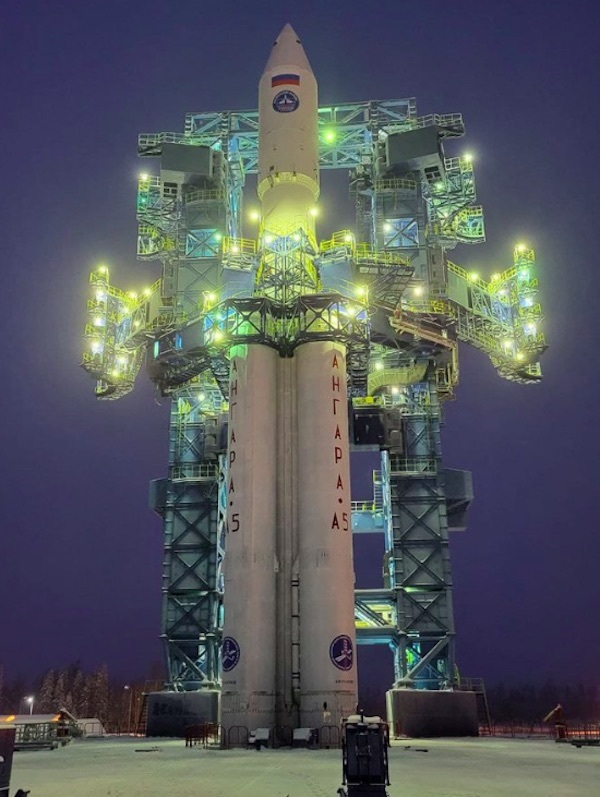
Nach Angaben des Verteidigungsministeriums der RF wurde die Trägerrakete zur Eskorte auf dem Boden gebracht
MOSKAU, 27. Dezember. / TASS /. Die Weltraumstreitkräfte der russischen Luft- und Raumfahrtstreitkräfte führten den dritten Teststart der schweren Trägerrakete Angara-A5 mit der Perseus-Oberstufe und dem Gesamtmassenmodell der Nutzlast des Kosmodroms Plessezk durch. Das teilte das Ministerium für Information und Massenkommunikation der russischen Verteidigung am Montag mit.
"Am Montag, den 27. Dezember, um 22:00 Uhr (Moskauer Zeit), einen Teststart einer schweren Klasse "Angara-A5" mit dem Gesamtmassenlayout der Nutzlast "- teilte die Militärabteilung mit.
Das Verteidigungsministerium der Russischen Föderation stellte fest, dass alle Operationen vor dem Start und der Start der Weltraumrakete Angara-A5 im normalen Modus erfolgten. Bodenmittel der Space Forces der Aerospace Forces überwachten den Start und den Flug der Trägerrakete.
"Angara-A5" wurde zur Bodenunterstützung der russischen Luft- und Raumfahrtstreitkräfte eingesetzt. "Um 22 Uhr 00 Minuten (Moskauer Zeit) vom staatlichen Testkosmodrom des Verteidigungsministeriums der Russischen Föderation (Kosmodrom Plesetsk) in der Region Archangelsk gestartet, wurde die Weltraumrakete Angara-A5 zu einer geschätzten Zeit von 22:03 ( Moskauer Zeit) wurde zur Eskortierung auf dem Boden des nach G. S. Titov benannten Haupttestraumzentrums von den Weltraumstreitkräften der Luft- und Raumfahrtstreitkräfte akzeptiert ", sagte die Militärabteilung.
Der Orbitalblock als Teil der Perseus-Oberstufe und das Gesamtmassenmodell der Nutzlast getrennt von der dritten Stufe der schweren Trägerrakete Angara-A5. "12 Minuten nach dem Start wurden der Orbitalblock als Teil der Perseus-Oberstufe und das nicht abnehmbare Gesamtmassennutzlast-Mockup von der dritten Stufe der Angara-A5-Trägerrakete getrennt", teilte das Verteidigungsministerium mit Stufe nach einem typischen neunstündigen Drei-Puls-Schema mit vier Starts der Hauptmaschine der Oberstufe.
"Zur geschätzten Zeit in der Funksichtzone des bodengestützten automatisierten Kontrollkomplexes der Weltraumstreitkräfte der Luft- und Raumfahrtstreitkräfte in den etablierten Gebieten der Republik Komi, der Region Tomsk und des Wassergebiets des philippinischen Meeres, die Trennung der Stufen I, II und III und die Entlastung der Kopfverkleidung der ILV "Angara-A5" erfolgte, - in der Militärabteilung aufgenommen.
Über die Trägerrakete
Die Perseus-Oberstufe ist eine modernisierte Version des Blocks, der für die Proton-M-Rakete erstellt wurde. Der Blockentwickler ist RSC Energia. Wie Roskosmos-Chef Dmitry Rogosin bereits berichtete, soll 2021 erstmals die Perseus-Oberstufe mit der schweren Trägerrakete Angara-A5 ins All starten.
Angara ist eine Familie russischer Trägerraketen der leichten bis schweren Klasse. Die neue Familie verwendet umweltfreundliche Kraftstoffkomponenten. Die ersten beiden Starts der schweren "Angara" fanden am 23. Dezember 2014 und 14. Dezember 2020 vom Kosmodrom Plesetsk aus statt.
Quelle: TASS
----
Update: 28.12.2021
.
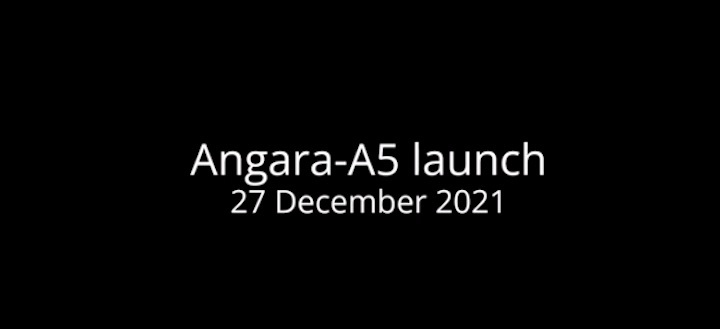
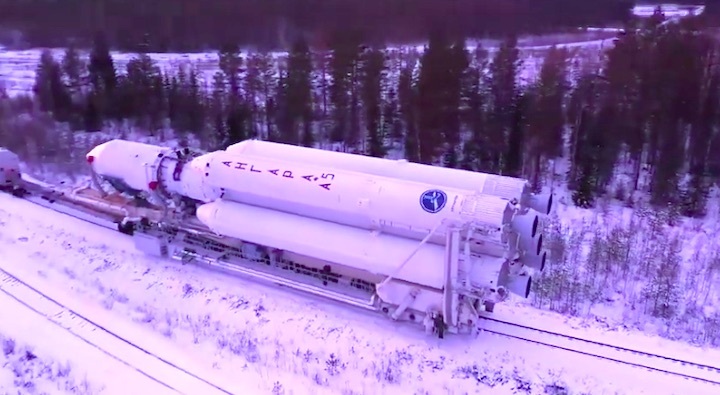
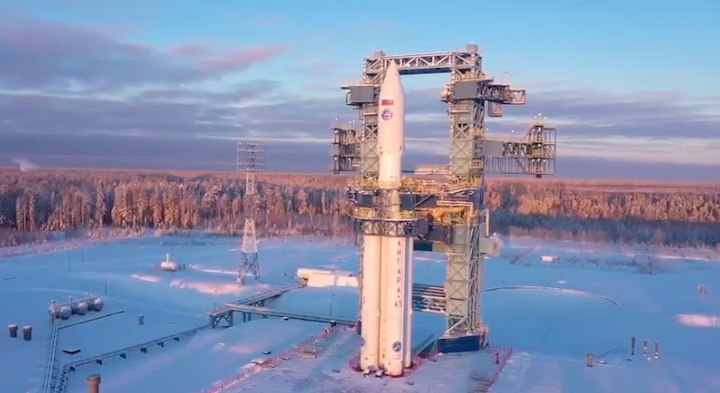
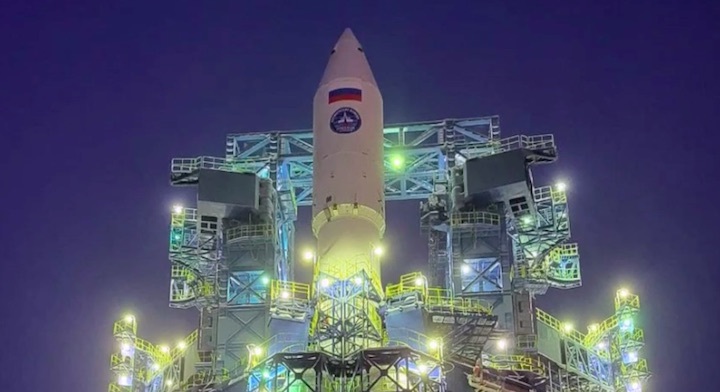
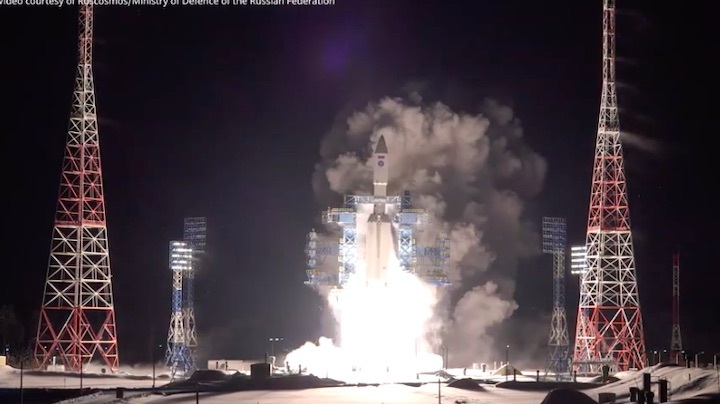


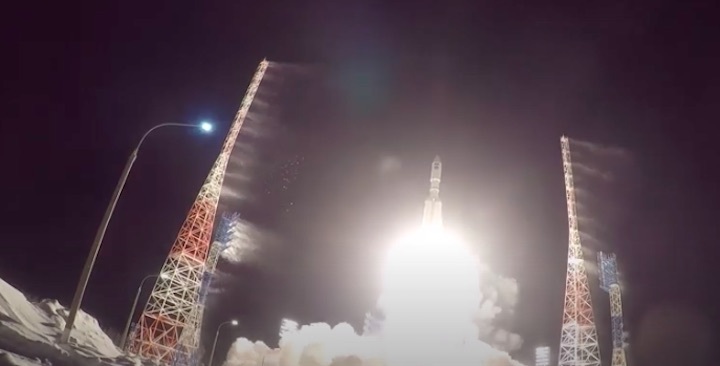

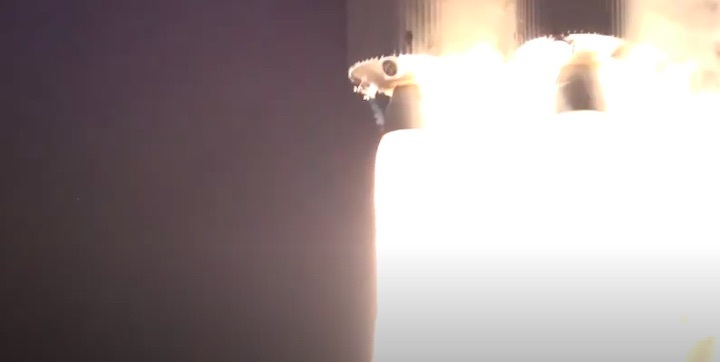

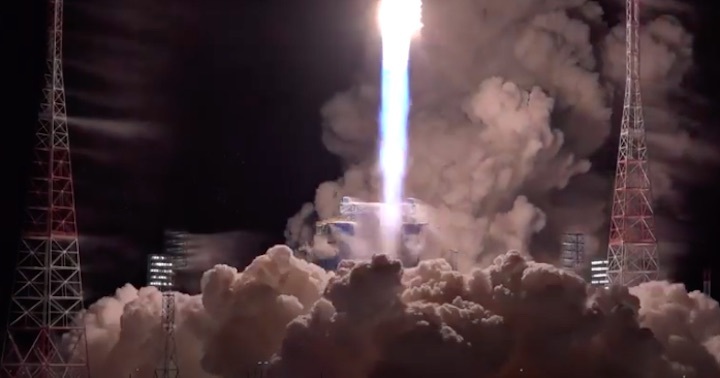

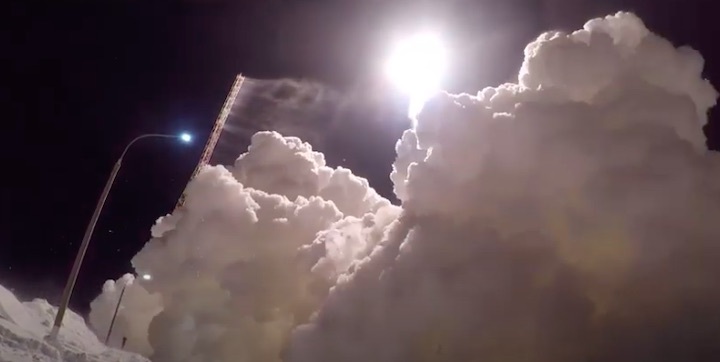
Quelle: YouTube
+++
Roscosmos chief offers congratulations on successful launch of Angara carrier rocket
Chief of Russia’s state space corporation Rosccosmos Dmitry Rogozin has congratulated the command of Russia’s space forces, the developers of the Angara carrier rocket on its successful launch.
"My congratulations to the command of the Russian space forces, the Plesetsk spaceport’s operational crew, the Khrunichev Center, the Energomash Research and Production Association, the Research and Production Center of Automatics and Instrument-Making, the Center for Operation of Space Ground-based Infrastructure on the successful launch of the heavy Angara!," he wrote on his Twitter account.
According to Rogozin, now it is necessary to wait for the performance of the Persei booster, which was developed by the Energia Rocket and Space Corporation and launched by the Angara carrier rocket for the firt time.
The Angara-A5 heavy carrier rocket was launched by the Russian space forces from the Plesetsk spaceport at 22:00 Moscow time on Monday.
The Persei booster, a modernized version of a unit originally meant for the Proton-M carrier rocket, was developed by RSC Energia. Chief of Russia’s state space corporation Roscosmos Dmitry Rogozin said earlier that the Persei booster would be launched for the first time on the Angara-A5 heavy carrier rocket in 2021.
Angara is a family of Russia’s launch vehicles, with versions ranging from light to heavy. The new family uses environmentally-friendly fuel components. There have been two launches of the Angara heavy rockets from Plesetsk - on December 23, 2014 and December 14, 2020.
Quelle: TASS
----
Update: 2.01.2022
.
Test launch of Russia’s heavy-lift Angara rocket marred by upper stage failure
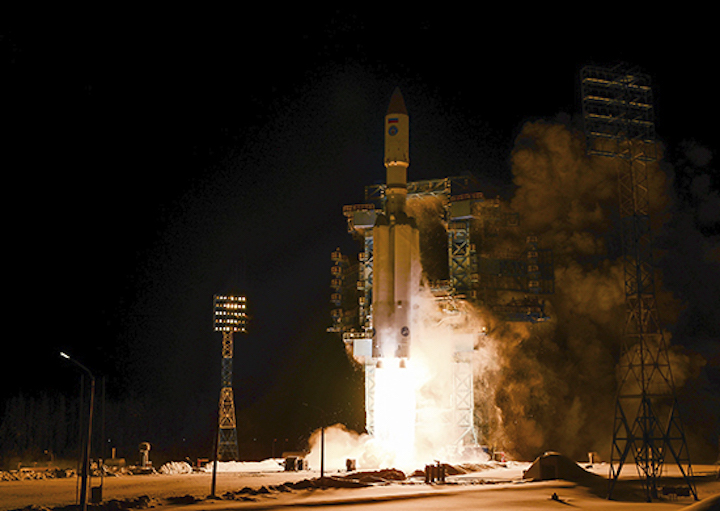
The third test launch of Russia’s heavy-lift Angara A5 rocket Dec. 27 was marred by an upper stage failure that stranded a dummy payload in a low orbit.
The Angara A5 rocket launched from the Plesetsk Cosmodrome, located in Russia’s Arkhangelsk region about 500 miles (800 kilometers) north of Moscow, at 2 p.m. EST (1900 GMT) on Dec. 27, according to Russia’s Ministry of Defense.
Liftoff occurred at 10 p.m. Moscow time to begin the third test flight of Russia’s heavy-lift Angara A5 rocket, following successful demonstration launches in 2014 and 2020.
The rocket’s five RD-191 engines collectively generated more than 2 million pounds of thrust to power the Angara A5 off the launch pad at Plesetsk.
Heading downrange east of Plesetsk, the rocket surpassed the speed of sound and jettisoned its four strap-on booster engines nearly three-and-a-half minutes into the flight. Then the rocket’s core stage, which fired its RD-191 engine at a lower throttle setting in the early phase of flight, powered up to full throttle to continue climbing into space.
The core stage switched off its engine and dropped away from the Angara’s third stage nearly five-and-a-half minutes after liftoff. A kerosene-fueled RD-0124 engine ignited on the third stage and fired for nearly seven minutes.
The Angara’s payload fairing jettisoned early in the third stage burn, revealing the rocket’s dummy payload after climbing into space.
The rocket then deployed a Persei, or Perseus, upper stage to perform a series of engine burns to maneuver into an orbit near geostationary altitude more than 22,000 miles (nearly 36,000 kilometers) above Earth.
A first burn was expected to accelerate the Persei stage into a parking orbit. That engine firing apparently concluded as planned.
But the upper stage did not conduct the additional engine burns needed to climb into a higher orbit. U.S. military tracking data showed the Persei upper stage, with its satellite mock-up payload presumably still attached, in a low orbit between 110 miles and 124 miles (177-by-200 kilometers) in altitude, well short of the mission’s target.
The orbit’s track was tilted at an angle of 63.4 degrees to the equator, according to radar tracking information obtained and published by the U.S. military.
The Russian Ministry of Defense confirmed the Angara A5 rocket’s blastoff from Plesetsk, but Russian officials provided no additional updates on the progress of the Persei upper stage.
The Persei stage is a modified version of the Block DM upper stage used on more than 200 Russian launches since 1974. The Angara A5 test flight Dec. 27 was the first use of the new Persei upper stage variant.
The first two Angara A5 test flights used Breeze M upper stages to place dummy payloads close to geostationary orbit. The Persei upper stage uses a different propellant mix — kerosene and liquid oxygen — than the hydrazine-fueled Breeze M.
The impact of the Persei stage failure on the Angara program was not immediately clear. But the Angara A5’s boosters, core stage, and second stage all apparently functioned as designed Dec. 27, giving the roc
The expendable Angara rocket family is designed to fly in several different configurations, depending on the mass of its payload and the targeted orbit.
The Angara A5 can place up to 24.5 metric tons — about 54,000 pounds — into a 120-mile-high (200-kilometer) orbit. On missions with communications satellites heading for geostationary transfer orbit, an Angara A5 rocket can lift up to 5.4 metric tons, or about 11,900 pounds, according to Khrunichev State Research and Production Space Center, the Angara’s prime contractor.
The Russian government gave the green light for development of the Angara rocket in 1992. After Khrunichev won the contract to design and build Angara, the Russian government stated the rocket should begin operations by 2005.
But funding difficulties repeatedly delayed the Angara program. Finally, in 2014, Russia performed the first two Angara test flights.
A single-core prototype of the light-class Angara 1.2 rocket — designed to loft smaller satellites — flew on a suborbital test flight in July 2014. The Angara A5 rocket debuted in December 2014, also successfully.
At that time, Russian officials said multiple Angara test flights were scheduled before the rocket was to become operational in 2020.
Russia did not meet that schedule. Since 2014, officials have opened a new Angara production facility in Omsk, Russia.
The Angara burns cleaner fuel than the Proton rocket it will replace, which consumes toxic hydrazine and nitrogen tetroxide propellants.
Russian workers are building a new Angara launch pad at the Vostochny Cosmodrome in Russia’s Far East. Roscosmos, Russia’s space agency, said Dec. 27 that the launch pad at Vostochny will be completed next year, in time to host the first Angara launch there in 2023.
Russia’s medium-lift Soyuz rocket has launched from Vostochny, Russia’s newest spaceport, since 2016.
Once operational, the Angara A5 rocket will allow Russia to move some of its space launches from the Baikonur Cosmodrome, which the Russian government leases from Kazakhstan, to spaceports on Russian territory.
Quelle: SN
